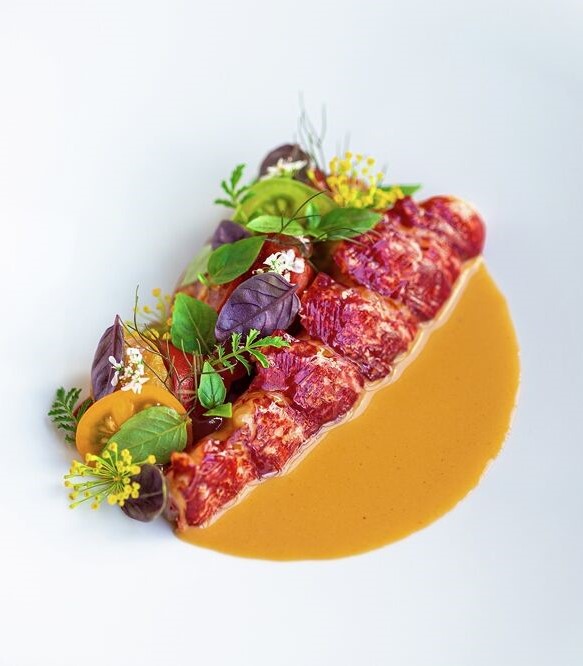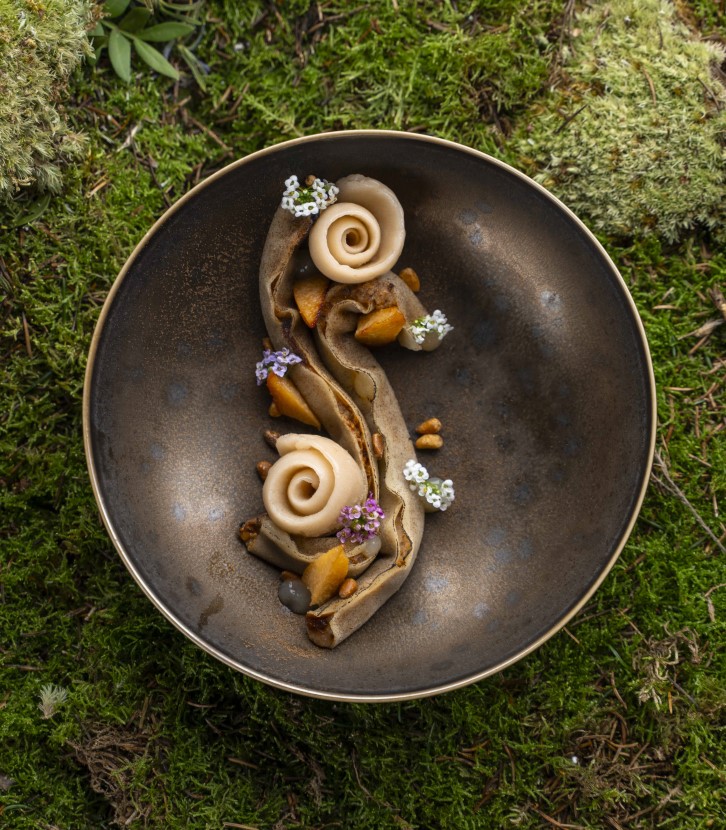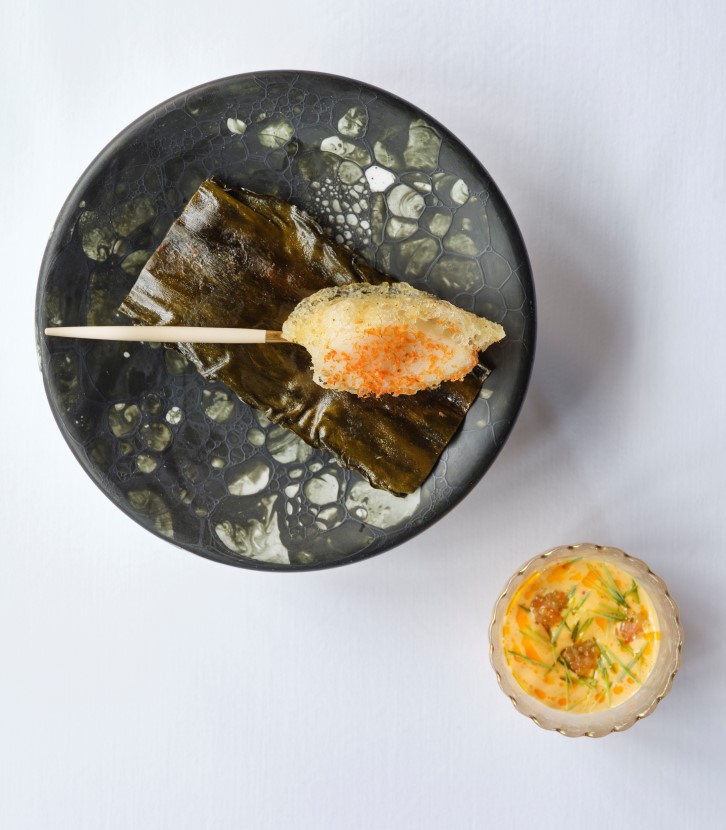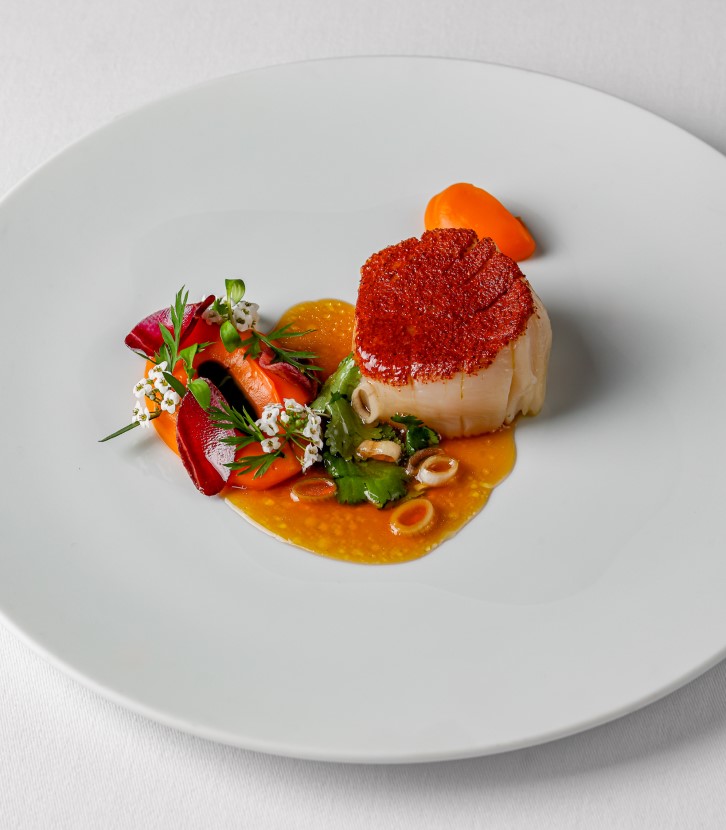The name of Hideaki Sato’s restaurant holds two meanings: in French, “ta vie” translates to “your life”, while in Japanese, the homophone means “journey”, a fitting name chosen by a chef who hopes to bring diners on a mesmerising journey through the evolution of his life expressed through his cuisine.
Ta Vie, he reckons, has reached a new peak after eight years with its recent acquisition of three MICHELIN stars.

The journey according to Sato, in hindsight, is akin to winemaking. “After a long period of planting vines, harvesting, fermenting, and maturing in the bottle, I can finally enjoy the beautiful wine,” he says. “This is the harvest time of my culinary journey.”

Hailing from Nagano, Japan, Sato trained in French cuisine for many years. A major turning point in his life happened when he was 32 years old. Deeply inspired by a squid ink dish, he made a decision to switch from French cuisine and learn Japanese cooking from scratch under chef Seiji Yamamoto of three-MICHELIN-starred RyuGin. It was a daring move that deeply influenced his cooking style and career from then on. "I think this was the biggest decision I ever made in my career, as well as the biggest challenge I ever faced," he recalls.
In 2012, Sato was posted to Hong Kong as head chef of now-defunct Tenkyu Ryugin, RyuGin's first overseas outpost. In just six months, Tenkyu Ryugin achieved two MICHELIN stars. Later, Sato would go on to open Ta Vie in 2015, on a cobblestone street in Central, Hong Kong, and earn its first MICHELIN star within six months. The following year, the restaurant was promoted to two MICHELIN stars, and then, finally to three in 2023, much to the joy of the team.
The chef smiles, recalling how surreal he felt when he received the news of the three-MICHELIN-star accolade, and how his phone wouldn’t stop ringing. Sato does not even remember who he called first to share the news with because everyone was just so exhilarated.

Persevering Through Ups and Downs
One could never begin to guess the ups and downs of the past eight years of Sato’s culinary career just by looking at his star-studded resumé. For example, after receiving one MICHELIN star in 2015, the Christmas of 2015 saw a dip in business with just a few reservations each night — a worrying development for the chef. "I had no choice but to work hard to promote my business." Sato persevered through those difficult days with sheer willpower, focusing simply on doing what he could and should do. His efforts paid off, and the restaurant received two MICHELIN stars at the end of 2016.
Then came the pandemic of 2020 that nearly broke him. "It was a long and arduous period. We couldn't open for dinner, there weren't many customers, labour was short, and ingredient supply was unstable," Sato recalls. "Even so, there was good to be found. I used that time to experiment and create new dishes. Perhaps, it was those late nights in the kitchen that have allowed us to progress to a new level. During that time, I tried to create new dishes, kept experimenting, and worked late hours. Maybe, this time has allowed us to move to another stage. When things look dark, there's always a silver lining."

An often-shared anecdote was how Sato, in the spirit of developing a deeper connection with Hong Kong and Cantonese cuisine, set his mind to learn the art of making Peking duck during the height of the pandemic. He consulted with many Chinese master chefs to perfect the technique of cooking Peking duck, preparing almost 100 birds in the course of learning. Even though the dish never made it to Ta Vie’s menu, it is a display of his persistence and near-scientific-level dedication to his cuisine and pursuit of perfection.
An Eight-Year Creative Journey
At Ta Vie, Sato focuses on high-quality ingredients from Asia and Japan, using modern French cooking techniques to highlight the purest and most delicate flavours of these seasonal ingredients. He sums up his cooking philosophy in three words: "pure, simple and seasonal".

When Sato creates dishes, he always starts with the ingredients and thinks about how to showcase their natural characteristics. For example, a recent dish of Hokkaido Hairy Crab, Sweet Corn, and Cajun Sauce shines the spotlight on the fresh and sweet crustacean. Fresh crabs are de-shelled daily. The meat is wrapped with sweet corn and paired with a spicy cajun sauce that adds to the rich umami of the ingredients.
"Chefs are not pure artists, we are more like designers, combining form with function. For example, a well-designed chair should be both beautiful and comfortable, and the same goes for food! The art is in marrying taste and presentation — and making the two work together." He shares that inspiration comes in waves, sometimes suddenly from seeing a poster or an exhibition, and sometimes not at all. Creation can be fruitless and lonely work, but it is through this process that style is conceived and nurtured.
Ta Vie only has six employees and is, perhaps, the smallest three-MICHELIN-starred restaurant in the world. It’s hard to imagine how a team that small can handle every single detail in their kitchen, from the homemade breads to the cold brewed teas. When things get busy, Sato rolls up his sleeves and washes the dishes.
But it's this personal touch that sets Ta Vie apart. The culinary creations of a restaurant are its best ambassadors, so quality control is crucial — the restaurant closes when Sato is not in town. "This is the spirit of Japanese craftsmanship and respect for the profession,” he says, summarising his unswerving dedication to the pursuit of culinary excellence.
Header image is by BeGood, Humble Boutique Hotel. This article is originally written by Gloria Chung and translated by Rachel Tan.


















